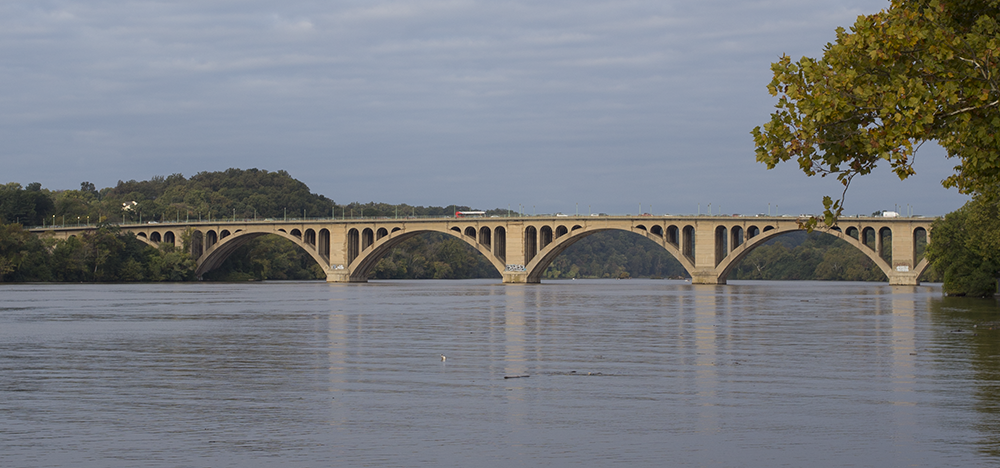
Potomac Conservancy launched a petition in July calling for Trump National Golf Club to replace 500 trees removed from the riverbank during its 2010 construction and has since garnered more than 6,000 signatures.
Environmentalist group Potomac Conservancy launched an online petition this summer in protest of Trump National Golf Club’s 2010 decision to remove 465 trees along the Potomac River, claiming this construction has severely damaged the surrounding environment.
Donald Trump, a leading Republican presidential candidate and businessman, purchased 800 acres from Loudoun County in 2009 to create Trump National Golf Club Washington D.C., adding to his international portfolio of golf clubs that already has branches in the United States, Scotland, Dubai, Ireland and the United Arab Emirates. In the process, the club cleared trees along the river to provide unobstructed water views.
The Silver Springs, Md.-based Potomac Conservancy initially visited the club in 2010 and recommended several measures to restore the shoreline, but did not receive a response from the club, according to Senior Director of Communications Melissa Diemand.
“The action [of clearing the trees] has degraded water quality for outdoor enthusiasts such as fishers, paddlers, runners and bikers along the river,” Diemand said. “[Clearing shoreline trees] often negatively affects the five million residents’ drinking water that comes from the Potomac.”
The organization decided to bring attention to the issue again this summer after Trump visited the club in June and spoke about how he owns the longest stretch of unobstructed views along the Potomac. The petition, which opened on change.org in July, calls for Trump to donate 500 mature trees to be replanted on the riverbank in Loudoun County. More than 6,000 supporters have signed the online petition, which will close Oct. 31.
After the petition closes, Potomac Conservancy will call for Trump to donate trees to Northern Virginia Regional Park, which will then be replanted along the shoreline.
“Whether or not Trump does the right thing, we are going to push forward and fight for clean water at the local level so that this tragedy doesn’t happen again in our backyard,” Diemand said.
After removing the trees in 2010, the Trump Organization later planted 100 trees elsewhere in the club and placed a grass layer along the shoreline to prevent soil erosion. In July 2011, the Loudoun Soil and Water Conservation District initiated an investigation into the impact of the tree removal.
Conservation District Chairman James Christian noted that the Trump Organization has made a conscious effort to minimize potential damages to the Potomac River and local neighborhoods.
According to Christian, the Trump Organization was already working with environmental consultants before the District’s investigation began.
“Mr. Trump has not broken any laws. He perfectly has the right to remove the trees in his land,” Christian said. “Our relationship with Trump’s organization was amicable, and they were very cooperative.”
Glen Barbour, communications officer of the Office of the County Administrator of Loudoun, also confirmed that the county’s zoning regulations did not prohibit the removal of trees along the Potomac.
Prior to the investigation, then-Vice Chairman of the Conservation District Chris Simmons criticized the tree-planting, expressing concern that it did not protect the waterway and that county residents would face increased pollutants and sediments.
However, Simmons ended the investigation in November 2011 and told the Loudoun Times-Mirror that the study evolved into a cooperative partnership with Trump.
“The Trump organization feels very strongly that there is a lot of common ground and that conservation is a sound business practice and is open and eager to work with us, and we are happy to partner with them on conservation riparian practices here in the county,” Simmons said.
The Loudoun County government also recommended the club replant the removed trees, but did not have the regulatory authority to require such action.
Potomac Environment Research and Education Center Associate Director Dann Sklarew said he doubted that 500 trees alone would make a substantial impact on the ecology of the 400 mile-long river.
However, Sklarew also raised concerns that converting land into a golf club can pose an even greater threat to the environment, since large-scale clubs often use artificial fertilizer to keep landscapes green.
“If that fertilizer is applied close to the river … then it may adversely affect the nutrient balance there or downstream,” Sklarew wrote in an email to The Hoya.
Brett Walls, a member of environmental nonprofit Potomac Riverkeeper Network, also said that a use of fertilizers may become a larger problem than soil erosion.
“Compared to what comes downstream from up the river, [the erosion of the riverbank] is going to be pretty minute,” Walls said.
The Trump National Golf Club did not respond to requests for comment.




















